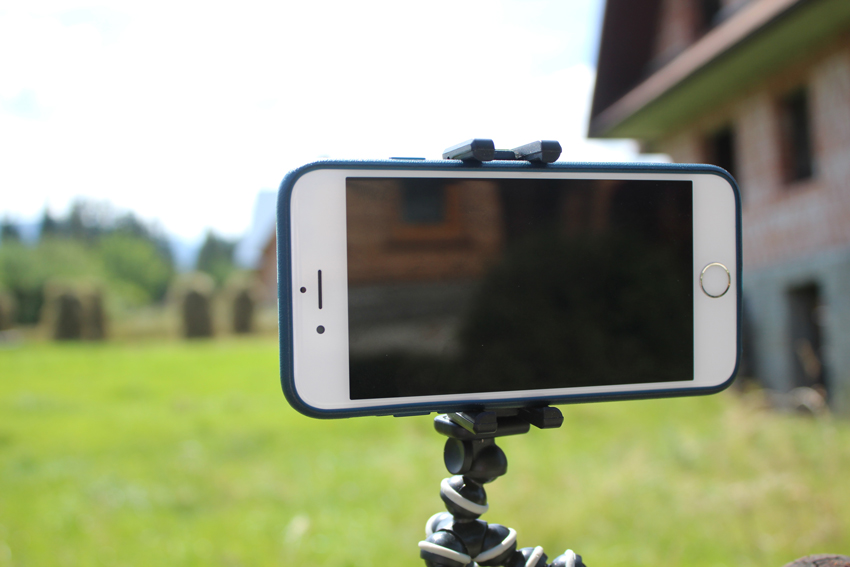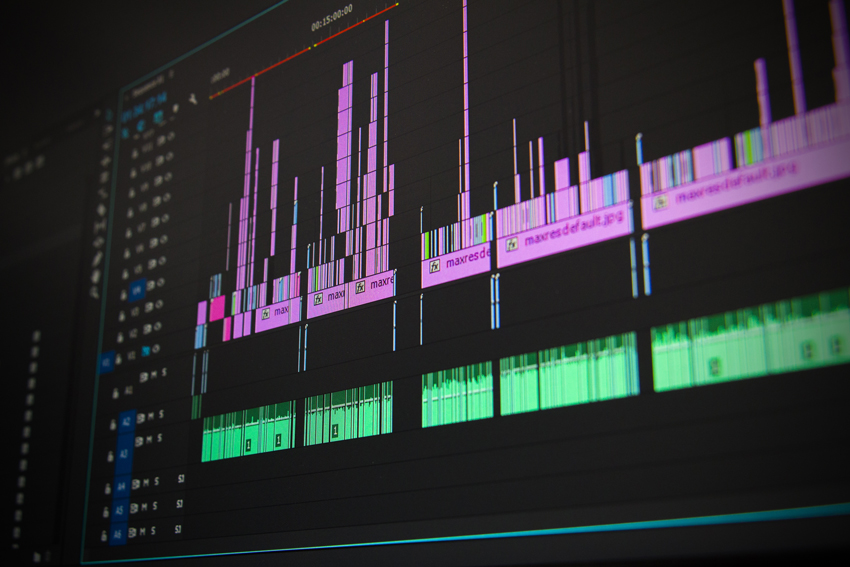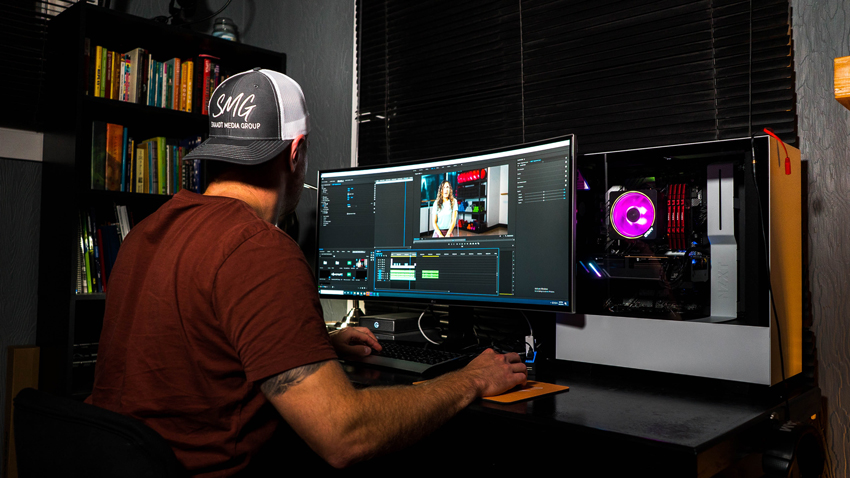You’ve got great ideas, cool clips, and maybe even a story to tell, but figuring out how to make videos for Instagram that actually grab attention can be tricky. Between choosing the right format, editing for the feed or Reels, and keeping up with trends, it can feel overwhelming.
The good news is that you don’t need expensive gear or a professional studio to create scroll-stopping Instagram videos. In this guide, we’ll cover everything you need to know, from understanding the basics of Instagram video types and specs to planning, recording, and editing your content. You’ll also find useful tips, creative tools, and a quick checklist to help you post videos that look great and reach more people.
Instagram Video Basics
1. Types of Instagram Videos
Instagram offers several video formats, each with its own purpose and audience.
- Reels: Short, vertical videos designed to reach new viewers through Instagram’s Explore page. Reels are perfect for trends, tutorials, and quick, engaging content.
- Stories: 24-hour clips that appear at the top of your followers’ feeds. Stories are great for behind-the-scenes moments, polls, and interactive content.
- Feed Videos: Longer videos that appear in your main profile grid. These videos are ideal for announcements, mini tutorials, or product showcases.
- Live Videos: Real-time streams that let you interact directly with your audience. Live videos help build community and trust with followers.
2. IG Video Specs and Requirements
Uploading videos that meet Instagram’s technical requirements is crucial for quality and visibility. Here are the main specs to keep in mind:
Following these specs ensures your video looks crisp and professional without being cut off or distorted on viewers’ screens.
3. What Performs Best on Instagram
To make your videos more engaging, focus on content that grabs attention quickly. Short, vertical clips work best, especially when paired with trending audio. Adding captions or subtitles makes your content more accessible, and natural lighting or clear visuals help your video stand out in a crowded feed.
💡 Bonus: Enhance Your IG Videos with Aiarty Video Enhancer
If you want your Instagram videos to stand out in a crowded feed, nothing helps more than crystal-clear visuals and smooth, professional-looking motion. Aiarty Video Enhancer is an AI-powered tool designed to take your footage to the next level. It sharpens details, reduces noise, balances color, and ensures every frame looks polished and vibrant.
Reels, Stories, and Feed posts all benefit from enhanced videos, making them look more professional and helping boost engagement, watch time, and overall reach. Even clips shot on a smartphone can be transformed into eye-catching content that holds viewers’ attention from the very first second.


For creators looking to make their Instagram content pop, Aiarty Video Enhancer delivers professional-quality results without the steep learning curve of traditional video software. It’s a quick, easy way to give your videos the polish they need to compete on Instagram and capture more eyes.
How to Make Videos for Instagram
Making videos for Instagram might seem simple at first glance, but high-performing content is the result of planning, execution, and optimization. This section will break down the entire process, from brainstorming your first idea to posting your video strategically to maximize reach.
Step 1: Plan Your Video
Planning is the most critical step. Without a clear plan, even well-shot videos can fail to engage viewers.
1. Define your goal: Start by identifying why you are making the video. Are you trying to:
- Educate your audience? (e.g., tutorials, tips, how-to guides)
- Entertain? (funny skits, challenges, trends)
- Promote a product or service? (demonstrations, launches, reviews)
Knowing your goal will guide every other decision — from content style to format.

2. Identify your audience: Understanding your viewers’ preferences, habits, and pain points ensures your content resonates. For example, younger audiences may prefer fast-paced Reels with trending music, while a professional audience may engage more with tutorial-style Feed videos.
3. Brainstorm content ideas: A good approach is to write down at least 10 ideas for your video. Look for inspiration in trending Reels, competitors’ content, or popular hashtags. Keep your ideas specific and actionable.
4. Create a storyboard or script: You don’t need a professional screenplay. Even a simple outline can make a huge difference:
- Opening hook (first 3 seconds)
- Core message or main action
- Call-to-action (CTA) at the end (like, save, comment, follow)
Example: For a skincare Reel, your storyboard might be:
- Hook: “Tired of dry skin?”
- Core: Quick 3-step morning routine
- CTA: “Try this routine and tag a friend who needs it”
5. Choose your format: Each type of Instagram video works best for specific goals:
- Reels: short, viral potential, trending audio
- Stories: temporary, interactive, behind-the-scenes
- Feed videos: longer, evergreen content
- Live: real-time engagement
Pro Tip: Planning includes the intended duration. Reels under 30–60 seconds perform better for reach, Stories should be quick and snackable, and Feed videos can go up to 10 minutes if you keep them engaging.
Step 2: Record High-Quality Footage
Recording is where your video starts coming to life. Quality matters, but you don’t need professional equipment to make your videos stand out.
1. Camera and orientation:
- Reels and Stories: vertical (9:16)
- Feed videos: vertical (4:5) or square (1:1)
- Live: vertical (9:16) is recommended
- Framing is crucial. Keep your subject centered or use the rule of thirds for a more professional look.

2. Lighting: Natural light is the easiest way to make your videos look polished. Face a window or soft light source. Avoid strong backlight unless you want a silhouette effect. For indoor filming, a ring light or LED panel can help.
3. Audio: Clear audio is non-negotiable. Smartphones capture decent sound, but if possible, use a lavalier mic, shotgun mic, or apps that reduce background noise. For storytelling or tutorials, audio clarity can make or break engagement.
4. Stability: Shaky footage is distracting. Use a tripod, gimbal, or stable surface. Even handheld clips can work if you keep movements smooth and deliberate.
5. Multiple takes: Don’t settle for a single take. Shoot multiple versions of key scenes. This gives you flexibility during editing and increases your chance of capturing the perfect moment.
6. Background and environment:: Avoid cluttered backgrounds. Ensure that props, lighting, and surroundings support your story rather than distract.
Step 3: Edit Your Video
Editing is where raw clips transform into captivating content. It’s not just about cutting footage; it’s about pacing, storytelling, and visual appeal:
1. Select an editing tool: The right tool can make editing faster and your videos more professional. Here are some of the best options for Instagram creators:
- CapCut: Perfect for Reels and Stories, with trending templates, a simple timeline, and easy TikTok/Instagram presets.
- InShot: Ideal for quick edits, trimming, filters, and adding music overlays—great for mobile editing on the go.
- Canva: Provides customizable templates, motion graphics, and animated text to make your videos visually engaging.
- Aiarty Video Enhancer: AI-powered tool that sharpens details, reduces noise, and improves overall video clarity, giving your clips a professional finish.
Pro Tip: Choose a tool that matches your workflow—CapCut and InShot are fast for social-first content, Canva is great for stylized videos, and Aiarty ensures top-notch visual quality.

2. Trim and sequence: Remove unnecessary footage to keep the video concise. Place your strongest visual elements early to hook viewers in the first few seconds.
3. Captions and subtitles: Many users watch without sound. Adding clear captions improves retention and accessibility. Use readable fonts and contrast with the background.
4. Transitions and effects: Subtle transitions keep your video smooth. Avoid overusing flashy effects that distract from the main content.
5. Color and lighting correction: Adjust brightness, contrast, and saturation to make visuals pop. Consistency across your videos builds a recognizable aesthetic.
6. Music and sound effects: Choose trending audio or background music to make your content more engaging. Ensure you use royalty-free or platform-approved music.
7. Cover/thumbnail creation: A compelling cover increases the likelihood of viewers clicking your video. For Reels and Feed videos, create a visually appealing thumbnail with clear imagery and text if appropriate.
Step 4: Optimize and Grow Reach
Publishing your video is just the start. Optimizing your content ensures it reaches the right audience and encourages engagement.

1. Captions and keywords: Write captions that explain your video and naturally include relevant keywords. Add a CTA such as “Comment your favorite tip below” or “Save this video for later.”
2. Hashtags: Use a mix of trending, niche, and general hashtags. Limit yourself to 10–20 well-chosen hashtags to avoid looking spammy.
3. Tagging: Tag accounts, collaborators, or locations when appropriate. This expands reach and increases visibility in search and Explore pages.
4. Posting schedule: Share your video when your audience is most active. Instagram Insights can guide you toward peak engagement times.
5. Cross-sharing: Share Reels to Stories or Feed posts to increase visibility. Repurposing content across formats maximizes reach.
6. Engagement: Reply to comments, answer questions, and encourage discussion. Instagram rewards content with higher engagement rates by showing it to more people.
7. Analytics: Track metrics such as reach, watch time, completion rate, and shares. Use this data to refine future content.
Common Mistakes to Avoid
Even seasoned creators can slip up. Avoid these mistakes to keep your videos performing well:
- Uploading low-resolution or horizontal footage when vertical is recommended
- Skipping captions or subtitles
- Overloading the video with filters, effects, or text overlays
- Using copyrighted music without permission
- Failing to hook viewers in the first few seconds
- Posting inconsistently or without a clear plan
Pro Tip: Review your video before posting from the perspective of a viewer. Ask yourself if it grabs attention immediately, is visually clear, and communicates your message effectively.
Best Tools to Make Instagram Videos
Choosing the right tools can make the difference between a good Instagram video and one that really stands out. With the right apps and software, you can streamline recording, editing, and optimizing your content, even without professional experience. Below is a detailed guide to the best tools in 2025, organized by purpose.
1. Editing Tools
Editing is the heart of creating engaging Instagram videos. These tools help you trim, sequence, add effects, and polish your content with professional precision.
- Adobe Premiere Pro
- Ideal for: Professional-grade editing, advanced color grading, multi-camera projects
- Features: Timeline-based editing, effects library, motion graphics integration, LUTs for color correction
- Pro Tip: Use Premiere Pro for Feed videos or promotional content where polish and flexibility matter most.
- Final Cut Pro
- Ideal for: Mac users seeking fast, professional editing with advanced features
- Features: Magnetic timeline, multi-cam editing, 4K and 8K support, motion graphics
- Pro Tip: Great for content creators producing high-quality Reels and Feed videos that require precision editing.
- CapCut (CapCut not working? check out these proven solutions >>)
- Ideal for: Reels and Stories, trend-based content
- Features: AI auto-cutting, templates, music library, text overlays, special effects
- Pro Tip: Use CapCut’s trending templates to quickly create Reels that match current trends and music.
- InShot
- Ideal for: Quick edits, resizing for multiple Instagram formats
- Features: Trim, split, merge, filters, text, and music overlay
- Pro Tip: InShot’s canvas resizing tool is perfect for converting horizontal footage into vertical Reels or square Feed videos.

2. Templates and Design Tools
Templates can save time and give your videos a polished look. They are especially useful if you want to maintain a consistent style across posts.
- Renderforest: Offers video templates for Reels, promo videos, and social content. Customizable with your branding, text, and audio.
- FlexClip: Provides animated templates, stock footage, and drag-and-drop editing—perfect for tutorial-style or marketing videos.
- Canva: Canva provides pre-built motion templates specifically for Instagram Stories and Reels. It also offers animated text, graphics, and customizable branding elements.
3. Stock Footage and Audio Resources
High-quality stock footage and music can enhance videos and save time.
- Pixabay & Pexels: These platforms offer free stock videos and photos, ideal for background shots, B-roll, or filler content. When using stock footage, it’s best to use it sparingly and ensure it matches your brand’s colors and overall style.
- Epidemic Sound: A paid library of royalty-free music and sound effects, including trending tracks that fit Reels and Stories perfectly. Choosing audio that complements the pace and mood of your video can make a major difference in engagement.
- Mixkit: Provides free stock video and music, making it a great option for creators on a budget. Always credit content when required and double-check license restrictions.
4. Tools for Planning and Optimization
Planning and optimization tools help you post at the right time, track performance, and improve reach.
- Later & Buffer: These tools allow you to schedule posts, Reels, and Stories in advance while providing analytics on best times to post, engagement rates, and hashtag performance.
- Instagram Insights: A built-in analytics tool that shows reach, impressions, saves, shares, and audience demographics, helping you refine your content strategy.
- Hashtag Tools: Generate relevant and trending hashtags to improve discoverability and expand the reach of your videos.
5. Pro Tips for Using Tools Effectively
- Combine tools: Use one tool for recording, another for editing, and a third for optimization. For example, record on your phone, enhance with Aiarty, edit in CapCut, and schedule with Later.
- Batch your work: Record multiple videos at once and edit them in batches to save time and stay consistent.
- Keep it simple: Don’t overcomplicate editing. Clean, concise videos often outperform heavily edited ones.
- Test and iterate: Track which tools help your videos perform best, and refine your workflow accordingly.
Quick Checklist Before Posting Your IG Videos
Before you hit “Publish” on your Instagram video, a final review ensures your content looks polished, performs well, and reaches the right audience. Use this checklist as a guide to avoid common mistakes and maximize engagement.
This tier delivers impressive value for personal projects, social media clips, and simple edits—completely free and accessible without upgrading.
 FAQs
FAQs
Instagram offers several video formats, each serving different purposes:
- Reels: Short, entertaining, or educational clips with high potential for virality.
- Stories: Temporary content for behind-the-scenes, polls, or quick updates.
- Feed Videos: Longer, polished videos for tutorials, promotions, or storytelling.
- IG Live: Real-time interaction with followers, perfect for Q&A, announcements, or live events.
Choosing the right format depends on your goals and audience preferences.
Video length depends on format:
- Reels: 15–60 seconds for best engagement.
- Stories: Up to 60 seconds per Story segment. Multiple segments can be combined.
- Feed Videos: 30 seconds to 10 minutes, depending on content type. Shorter videos often retain viewers better.
- Live Videos: No strict limit, but 15–60 minutes works best for audience engagement.
- Use stable footage with a tripod or gimbal.
- Ensure proper lighting and clear audio.
- Edit using professional or semi-professional tools like Adobe Premiere Pro, Final Cut Pro, CapCut, or Aiarty Video Enhancer.
- Add captions and consistent branding elements like colors, fonts, or logos.
- Enhance your video with AI tools for sharpness, noise reduction, and color correction.
- Professional: Adobe Premiere Pro, Final Cut Pro – for advanced editing, color grading, and multi-camera projects.
- Semi-professional / Trendy: CapCut, InShot, Canva – ideal for Reels, Stories, and social-first content.
- Enhancement: Aiarty Video Enhancer – sharpens details, reduces noise, and improves overall video quality quickly.
To maximize the reach of your Instagram videos, start by using relevant hashtags and location tags to improve discoverability. Write clear, keyword-rich captions that include a call-to-action to encourage interaction. Post your content when your audience is most active, using Instagram Insights to identify peak engagement times. Cross-sharing Reels to Stories and Feed posts can further expand exposure, and monitoring analytics allows you to adjust your strategy based on what performs best.
To boost engagement, hook viewers within the first three seconds and keep your videos concise and visually appealing. Adding captions or subtitles helps reach viewers who watch without sound, while encouraging interaction through questions, polls, or calls-to-action can increase comments and shares. Enhancing video quality with AI tools like Aiarty ensures your visuals are polished and professional, making your content more likely to capture and retain attention.
Absolutely! Modern smartphones are capable of producing professional-looking content when combined with proper lighting, stable footage, and clear audio, potentially using an external microphone. Editing apps like CapCut, InShot, or Canva allow you to trim clips, add transitions, and include text, while AI enhancement tools such as Aiarty Video Enhancer can polish visuals to give your videos a professional finish. With these techniques, even smartphone-shot videos can compete with higher-end production quality.